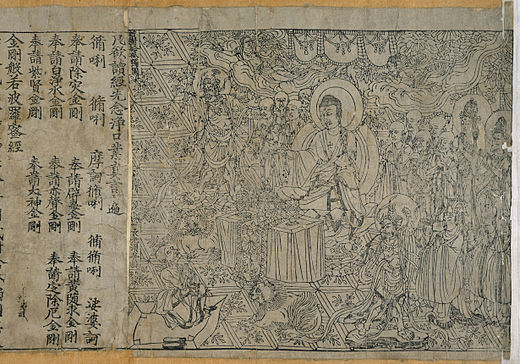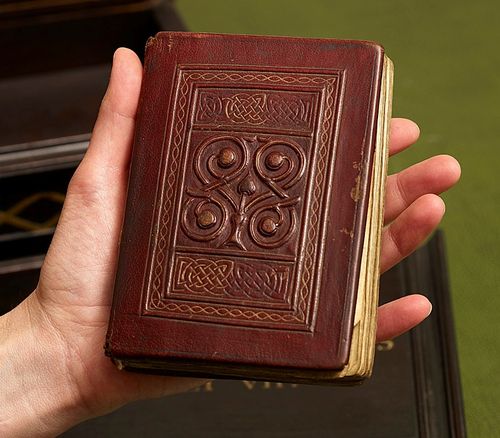Printing was not always as fast as it is today. As long as people have been creating art and writing, we have been looking for ways to recreate and distribute to reach the masses.
The earliest known print is the “Diamond Sutra”, a printed piece created within the 2nd and 5th centuries in China. It depicts the Buddha sitting beneath a tree, being asked by a follower, “How, Lord, should one who has set out on the bodhisattva path take his stand, how should he proceed, how should he control the mind?”. This print resides within a book preaching the teachings of the enlightened Buddha. It is believed that the “Dimond Sutra” was created using wood block printing.

Wood block printing entails using a thick slab of wood and carving the image you want out of the block. There were two different methods: raised and incised (known today as embossed and debossed). Incised was the act of carving the image into the wood so the only thing not printed was the image, whereas raised was the process of carving around the image so when printing, the image would be the only thing appearing on the page. The process of raised printing can be compared to sculpture; pulling the material out in order to leave the artwork behind.
Wood block printing was commonly used for manuscripts as well, after its invention, allowing monks to faster produce illuminated manuscripts, rather than hand painting every page. This was important to design, as it got the word of the Lord out to more people, not just those who were wealthy enough to afford hand decorated bibles.
Embossing was used often with leathers, with the image heated to a high temperature and the leather pressed into it, forming around the hot metal. This method can be seen in The Cuthbert Gospel, a small pocket bible recovered from the grave of Saint Cuthbert in the Durham Cathedral in 1104. It is the oldest surviving European book known to man.

Another form of printing that was popular in the early days of the craft was engraving. Similar to wood block printing, the artist would carve into the material, in this case metal rather than wood, to create the image. Ink would be laid overtop, then wiped away so the ink only resided in the carved lines. A piece of paper would then be compressed onto the metal plate to pick up the ink print.
Printing was revolutionized with the printing press, invented in 1440 in Germany by Johannes Gutenberg. While Gutenberg is credited with the idea, Bi Sheng, a Chinese artisan, had the idea 400 years prior in China. The printing press entailed moveable characters that could be reused for printing and allowed for text to be printed much faster than what was seen at the time. This was the basis for modern printing, and has lead us to where we are today.

References:
https://en.wikipedia.org/wiki/Printmaking
https://www.prepressure.com/printing/history
https://www.thoughtco.com/history-of-printing-and-printing-processes-1992329
Judy’s in-class notes